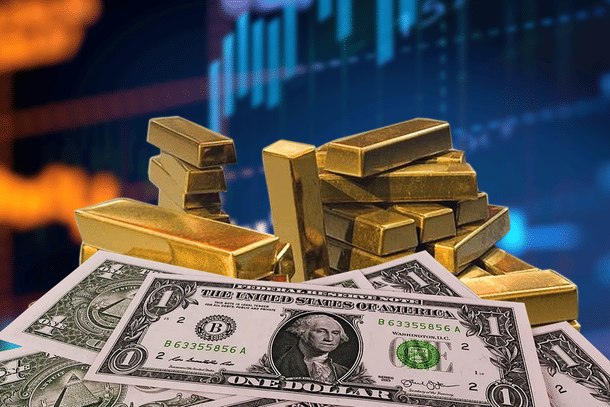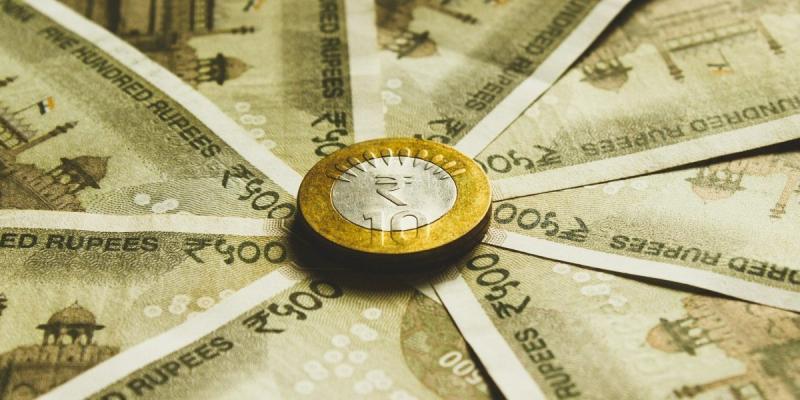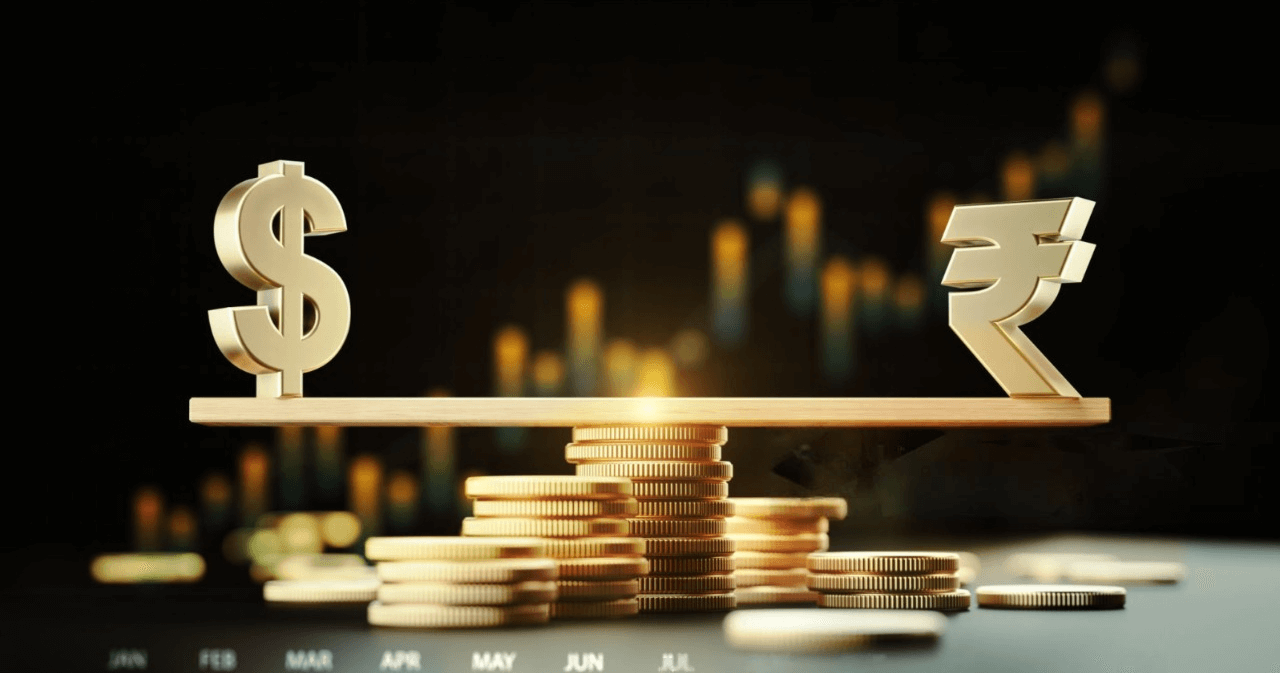Dollar US to Rupee Today: Key Factors Influencing the Rate

Dollar US to Rupee Today: Key Factors Influencing the Rate-The exchange rate between the Dollar US to Rupee has always been a topic of great interest for businesses, investors, and economists alike. Fluctuations in this rate can have significant impacts on various sectors, including trade, investments, and inflation. Understanding the factors that influence the Dollar US to Rupee rate is essential for anyone involved in cross-border transactions or financial markets. This article dives into the key factors driving the Dollar US to Rupee rate today, helping to explain its movements in the current economic landscape.
Current Dollar US to Rupee Exchange Rate
As of today, the Dollar US to Rupee exchange rate is hovering around ₹82-83 for every US Dollar. This value reflects ongoing fluctuations, as the rate is subject to change depending on both domestic and international factors. While the exchange rate is influenced by long-term trends, day-to-day variations can also be attributed to immediate changes in the economic environment.
For individuals and businesses engaging in foreign exchange transactions, understanding why the Dollar US to Rupee rate is at its current level is crucial. The factors influencing the rate range from domestic inflation to global financial policies, each playing a role in shaping the exchange rate.
The Role of Global Economic Conditions on Dollar US to Rupee

One of the major factors driving the Dollar US to Rupee rate is the overall condition of the global economy. Economic strength in major countries, particularly the United States, has a direct impact on the value of the US Dollar. For instance, when the US economy shows signs of growth, such as in the case of rising GDP or low unemployment, demand for the Dollar tends to increase, pushing the Dollar US to Rupee rate higher.
Conversely, when the global economy faces a slowdown or financial crisis, the US Dollar can be viewed as a “safe haven” currency, leading to increased demand. This often results in an upward pressure on the Dollar US to Rupee exchange rate. For example, the COVID-19 pandemic caused a flight to the US Dollar as investors sought stability, influencing the Dollar’s strength in relation to the Rupee.
US Federal Reserve’s Monetary Policy Impact on Dollar US to Rupee
The actions of the US Federal Reserve (Fed) play a crucial role in determining the value of the US Dollar, and subsequently, the Dollar US to Rupee exchange rate. The Fed’s decisions regarding interest rates, inflation control, and monetary stimulus directly influence market sentiment and investor behavior.
When the Federal Reserve raises interest rates, it makes investments in US Dollar-denominated assets more attractive to foreign investors. This influx of capital strengthens the Dollar, resulting in a higher Dollar US to Rupee exchange rate. On the other hand, when the Fed lowers interest rates, the Dollar typically weakens, which can lead to a drop in the Dollar US to Rupee rate.
Recently, the US Federal Reserve has been raising interest rates in an effort to combat inflation, and this has been one of the key drivers behind the strengthening of the Dollar against the Rupee. The higher interest rates offer better returns on US-based investments, which encourages foreign investors to purchase more Dollars, increasing the exchange rate against the Rupee. (Read More: Driver of Canadian dollar is broken on 2024)
India’s Economic Performance and the Dollar US to Rupee

While global economic conditions and US monetary policy have a significant influence on the Dollar US to Rupee rate, domestic factors in India are also crucial. India’s overall economic performance, including GDP growth, inflation, and fiscal policies, plays a vital role in shaping the value of the Rupee against the Dollar.
India’s trade balance, in particular, affects the Dollar US to Rupee rate. India has a trade deficit, meaning it imports more goods than it exports. To finance these imports, the country needs to buy foreign currency, particularly US Dollars. The higher the demand for Dollars to pay for imports, the weaker the Rupee becomes, pushing the Dollar US to Rupee rate higher.
Additionally, India’s inflation rate has a direct impact on the exchange rate. If inflation in India rises faster than in the US, the Rupee tends to weaken, as the purchasing power of the currency decreases. This results in a higher Dollar US to Rupee rate, as the cost of goods and services increases, making foreign goods more expensive for Indian consumers.
Crude Oil Prices and Their Influence on Dollar US to Rupee
Crude oil prices are another major factor influencing the Dollar US to Rupee exchange rate. India is one of the largest importers of oil, and since oil is priced in US Dollars, fluctuations in global oil prices have a significant impact on the exchange rate.
When oil prices rise, India faces higher import costs, which increases demand for US Dollars. This, in turn, puts pressure on the Rupee, causing it to depreciate against the Dollar. With higher oil prices, India needs more Dollars to finance its oil imports, which can lead to a rise in the Dollar US to Rupee rate.
On the other hand, a decline in global oil prices can reduce the demand for Dollars in India, potentially leading to a stronger Rupee. In this case, the Dollar US to Rupee rate may stabilize or even decrease as oil becomes cheaper, reducing the financial strain on India’s import bill. (Read More: The Impact of Rising Interest Rates on the US Dollar Exchange Rate in 2024)
Geopolitical Events and Dollar US to Rupee
Geopolitical events and tensions can have an immediate effect on the Dollar US to Rupee exchange rate. When global instability increases, investors often seek safe-haven assets, with the US Dollar being a primary choice. This demand for the Dollar can drive up the exchange rate, making the Rupee weaker.
For instance, any significant geopolitical conflict, such as the war between Russia and Ukraine or tensions in the Middle East, can cause uncertainty in global markets. This often leads to an increase in the Dollar’s strength as investors move away from riskier assets. Similarly, domestic political developments or policy changes within India can influence investor sentiment and lead to fluctuations in the Dollar US to Rupee rate. (Read More: Will the US Dollar Maintain Its Dominance in the Global Financial System in 2024?)
Foreign Investment Flows and Dollar US to Rupee

Foreign direct investment (FDI) and foreign portfolio investment (FPI) are critical sources of capital for India. When foreign investors bring capital into India, they typically convert their foreign currency into Indian Rupees, which helps strengthen the Rupee. However, when investors withdraw funds or shift investments away from India, the demand for Rupees decreases, which can weaken the currency and push the Dollar US to Rupee rate higher.
Changes in investor sentiment, both domestically and globally, can thus significantly impact the exchange rate. A slowdown in foreign investment or a shift in capital flows can put downward pressure on the Rupee, as investors may choose to move their capital to other markets. This dynamic is particularly important when considering fluctuations in the Dollar US to Rupee rate.
Reserve Bank of India’s Role in Dollar US to Rupee Fluctuations
The Reserve Bank of India (RBI) plays an important role in stabilizing the Dollar US to Rupee exchange rate. The RBI monitors the exchange rate closely and can intervene in the foreign exchange market to prevent excessive fluctuations in the value of the Rupee.
The RBI often uses its foreign exchange reserves to buy or sell US Dollars in the market. If the Rupee is depreciating too rapidly, the RBI might sell Dollars to inject Rupees into the system, thereby stabilizing the exchange rate. On the other hand, if the Rupee is strengthening too quickly, the RBI may purchase US Dollars to prevent the currency from appreciating too much, which could hurt exporters.
These interventions, however, are limited in scope and cannot completely control the Dollar US to Rupee rate in the long term. They are typically used to smooth out short-term fluctuations and provide stability to the exchange rate.
The Dollar US to Rupee exchange rate is influenced by a complex web of factors, both global and domestic. From US monetary policies to India’s trade deficit, and from crude oil prices to geopolitical events, each of these elements contributes to the ongoing fluctuations in the exchange rate. Understanding these key factors helps businesses, investors, and policymakers navigate the ever-changing landscape of currency exchange and make informed decisions about managing foreign exchange risk.





